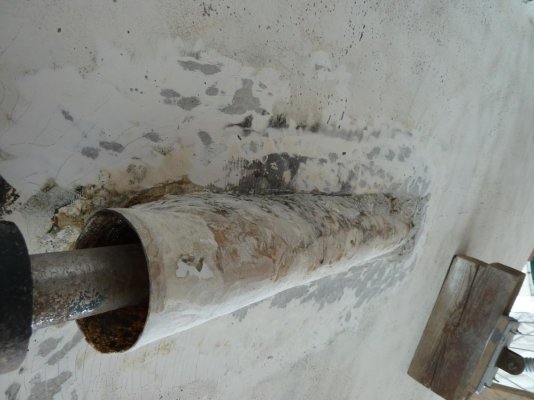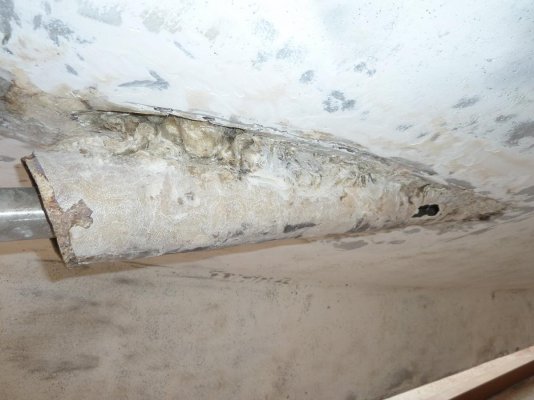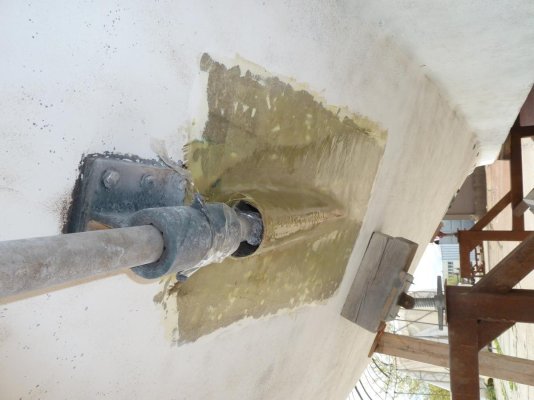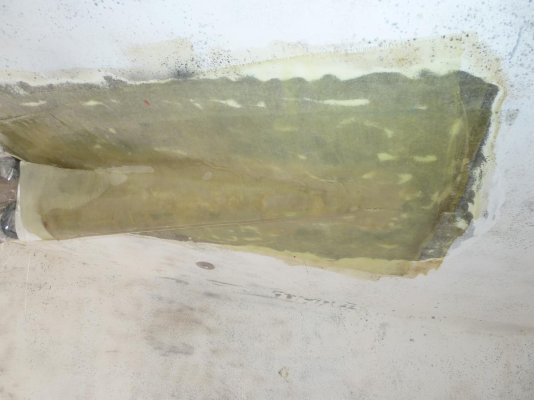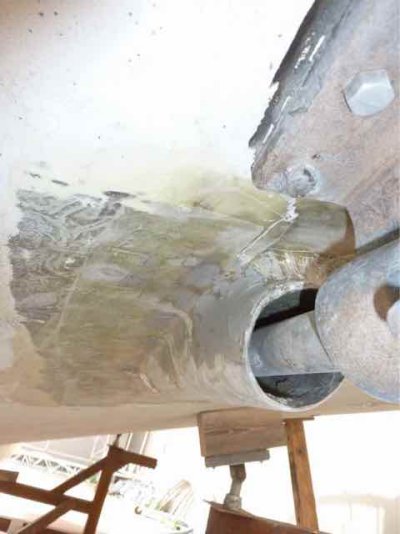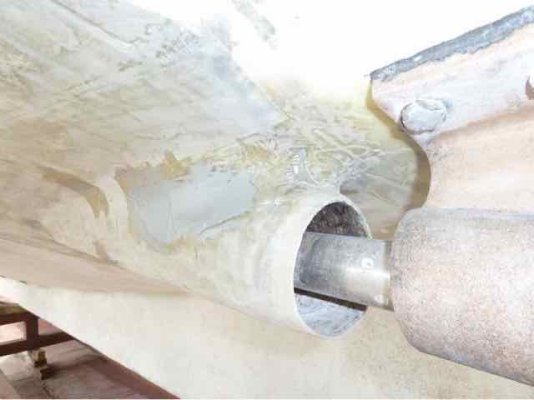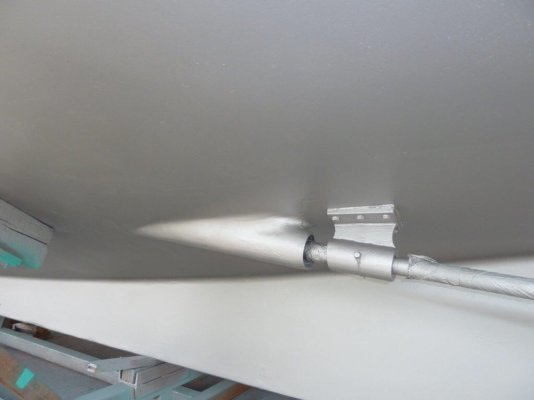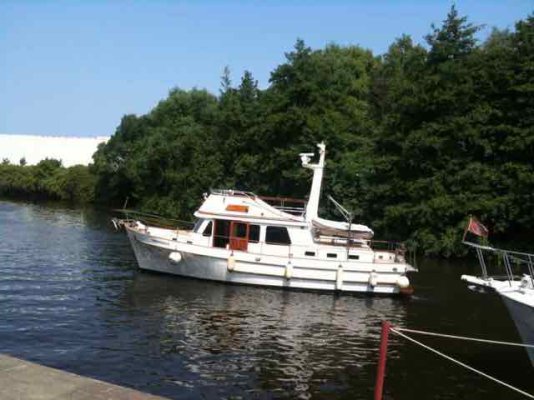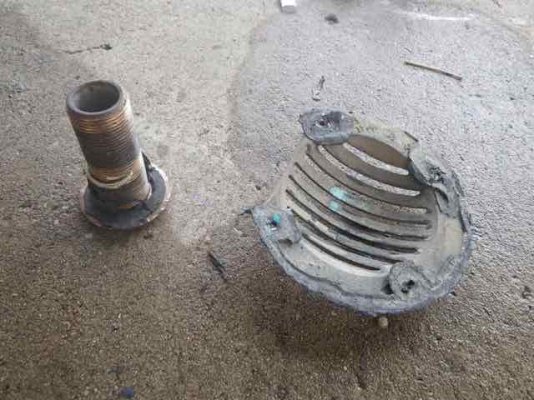waddenkruiser
Senior Member
Three years after we purchased her we put our 39 years old AMS 40' for the first time on the hard. Idea was to get a quick bottom paint job done by a reliable ship yard and to be back into the wet elements after 2-3 weeks latest.
Hull looked well after pressure wash, no blisters, no defects, nothing.
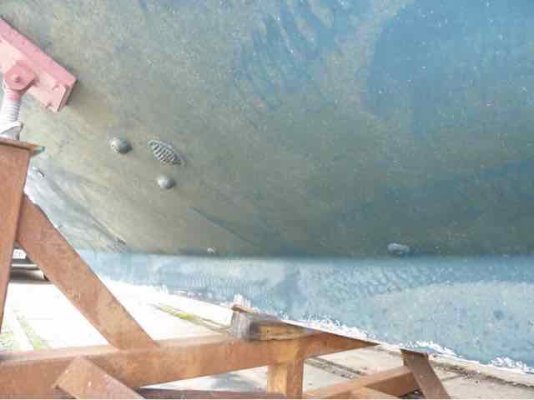
BUT the next day identified at the intersection of the hull and the shaft tunnels on both sides suspicious wet areas while the rest of the hull was perfectly dry. Scratched with a screw driver, suddenly some water came out - out of what?

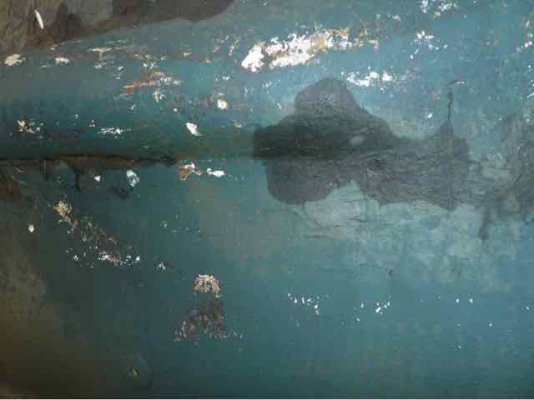
Decided to get the complete underwater hull blasted in order to apply five layers of epoxy (Gelshield) before renew the anti fouling. The PO did that 10 years ago but only in the waterline area.
Again no blisters, no defects.
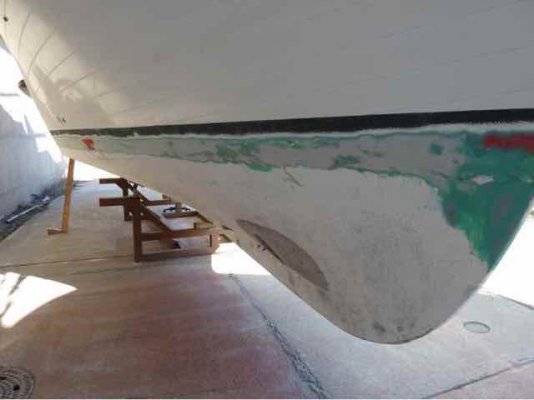
Knocked on the suspicious areas around the shaft tunnels - sounded hollow and consequently decided to open it.
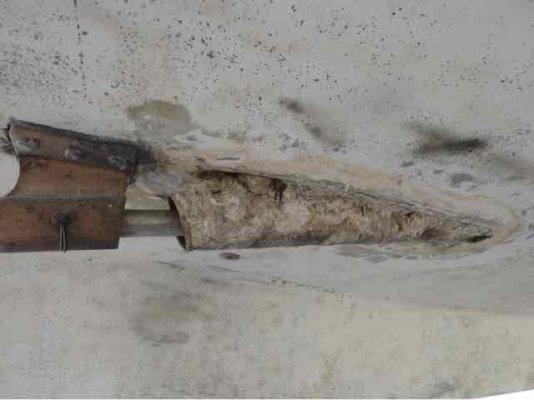

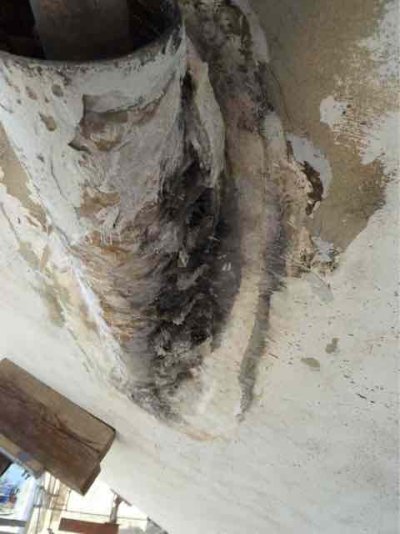
Obviously 39 years ago the Taiwanese ship yard (AMS hulls were built in Taiwan while the boats were equipped / completed in Hamburg / Germany) made a very poor job in that area by applying the GRP layers not tight enough to the surface of the shaft tunnel / hull intersection.
These areas are now properly rebuilt by the yard before the epoxy layers will be applied.
Will cost time and money but we definitely want to get rid of this issue.
However, taking into account her age she seems to be very robust. No other issues identified beside both hull / shaft tunnel intersections.
best regards / med venlig hilsen
wadden
Hull looked well after pressure wash, no blisters, no defects, nothing.

BUT the next day identified at the intersection of the hull and the shaft tunnels on both sides suspicious wet areas while the rest of the hull was perfectly dry. Scratched with a screw driver, suddenly some water came out - out of what?


Decided to get the complete underwater hull blasted in order to apply five layers of epoxy (Gelshield) before renew the anti fouling. The PO did that 10 years ago but only in the waterline area.
Again no blisters, no defects.

Knocked on the suspicious areas around the shaft tunnels - sounded hollow and consequently decided to open it.



Obviously 39 years ago the Taiwanese ship yard (AMS hulls were built in Taiwan while the boats were equipped / completed in Hamburg / Germany) made a very poor job in that area by applying the GRP layers not tight enough to the surface of the shaft tunnel / hull intersection.
These areas are now properly rebuilt by the yard before the epoxy layers will be applied.
Will cost time and money but we definitely want to get rid of this issue.
However, taking into account her age she seems to be very robust. No other issues identified beside both hull / shaft tunnel intersections.
best regards / med venlig hilsen
wadden
Last edited:

